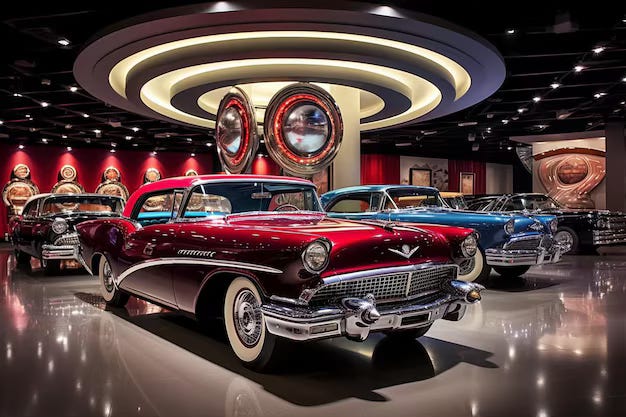Classic Cars as Investments in 2025
By Rafael Benavente
Classic Cars as Investments in 2025: Which Models Are Beating the Stock Market?
As traditional markets experience volatility and inflation chips away at purchasing power, savvy investors are increasingly turning to alternative assets. One standout in 2025 is classic cars. Once the domain of collectors and hobbyists, the classic car market has matured into a serious asset class that, in many cases, has outperformed stocks and real estate. With the right research and timing, owning a piece of automotive history can yield both emotional satisfaction and financial returns.
1. Why Classic Cars?
Classic cars are tangible, limited in supply, and emotionally charged assets. Unlike stocks, or other volatile investments you can see, touch, and even drive your investment. They offer portfolio diversification, non correlated risk and, in some countries, favorable tax treatment on gains. The scarcity of certain models—especially those with original parts and low mileage—drives up value over time. For many investors, classic cars offer the perfect intersection of passion and profit.
2. Top Performing Models in 2025
- **1990s Toyota Supra Mk4 (Turbo)**: A favorite among JDM (Japanese Domestic Market) enthusiasts, the Supra has seen price jumps of over 20% year-over-year, especially for unmodified versions with manual transmissions.
- **Ferrari 308 GTS**: Immortalized by pop culture, this mid-engine V8 icon is climbing in value, particularly models with service records and low mileage.
- **Porsche 911 (964 and 993 generations)**: Known for their bulletproof air-cooled engines, these models are becoming increasingly rare, with European and U.S. demand driving prices.
- **Land Rover Defender (Pre-1997 models)**: These utilitarian legends, especially two-door versions and right-hand drives, are gaining traction as collectors lean into rugged, analog experiences.
3. Market Trends in 2025
In 2025, several trends are accelerating interest in classic cars:
- **Younger buyers entering the market**: Millennials and Gen Xers are collecting 80s and 90s vehicles they idolized growing up.
- **Digital auction platforms**: Sites like Bring a Trailer, Cars & Bids, and Collecting Cars are creating price transparency and global access.
- **Analog appreciation**: As modern vehicles go electric and autonomous, demand grows for cars with manual transmissions, no driver aids, and visceral driving dynamics.
- **EV regulations**: Bans on combustion engines in major cities are paradoxically increasing the desirability of vehicles deemed 'last of their kind'.
4. How to Invest in Classic Cars
Smart classic car investing involves buying cars with strong provenance, limited production, and brand pedigree. Look for models in original condition, with matching numbers, and comprehensive service history. Rarity, originality, and cultural relevance are key value drivers. Investors should factor in costs like climate-controlled storage, insurance, regular maintenance, and potential restoration. It’s also important to track auction data and industry indexes to time buys and sells effectively.
5. Risks to Consider
Classic car investing is not without risk:
- **Illiquidity**: It can take months to sell a vehicle, especially niche models.
- **Cost of ownership**: Restoration, storage, and upkeep costs can eat into returns.
- **Market cycles**: Like all investments, the classic car market has ups and downs. Overhyped models can crash in value.
- **Authentication challenges**: Fraudulent documentation or aftermarket modifications can lower value or disqualify vehicles from certain auctions.
6. Outlook for 2025–2030
Looking ahead, classic cars from the 1980s to early 2000s are expected to dominate. Japanese performance cars, air-cooled Porsches, and early supercars will likely continue to climb in value. Fractional ownership platforms are also emerging, allowing investors to co-own high-value vehicles with lower upfront capital. In a world of digitized everything, classic cars offer a rare, analog investment that evokes nostalgia and commands attention.
By Rafael Benavente

